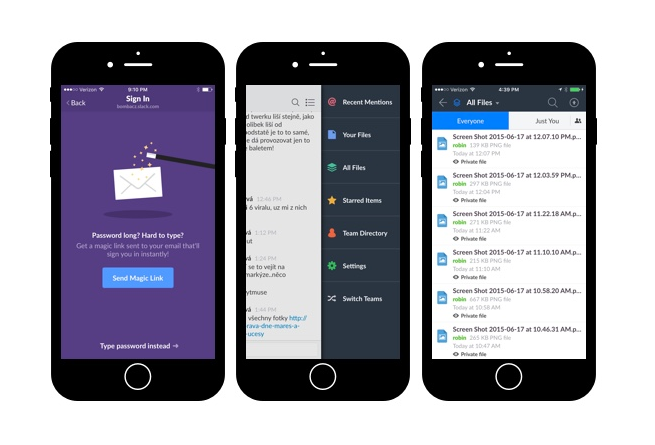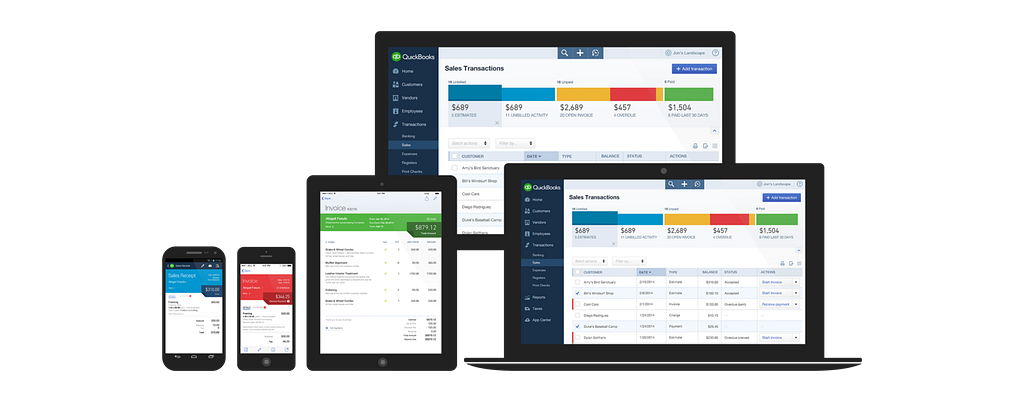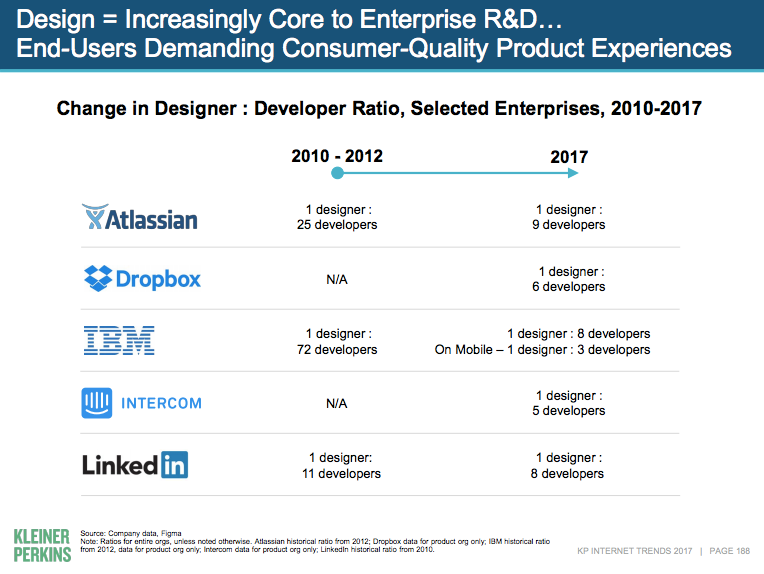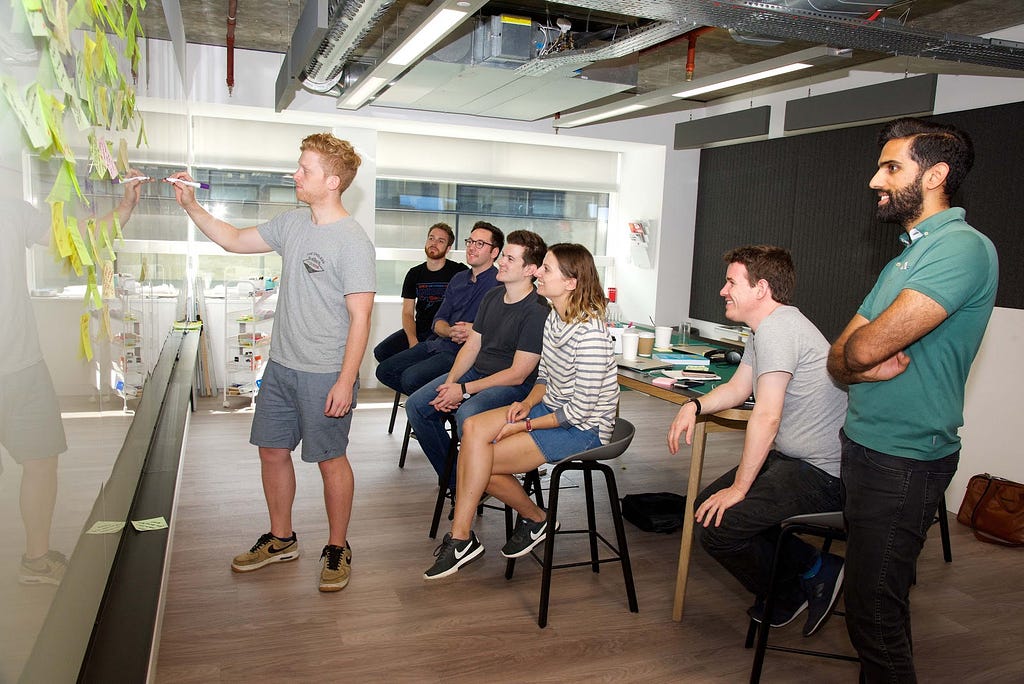How some enterprise companies approach modern product design and push the envelope

Legendary Swiss designer and entrepreneur Yves Behar has a mantra: “good design really accelerates the adoption of new ideas.” Technology, he says, isn’t enough to ensure adoption. The most important part is the experience—which he has infused into a wide variety of products from the August smart lock to the SodaStream Source. When it comes to making software, consumer technology companies learned early on that products require great design to create intuitive, delightful, and engaging experiences that customers crave and return to.
It’s an insight that enterprise companies ignored until recently. During the last three decades, enterprise technology products were expected to be feature-rich and were evaluated for raw product functionality. Unfortunately, the folks using those tools after a seven figure investment had to navigate through maddening mazes of icons on interfaces that were anything but user-friendly. If they encountered trouble, they could consult the user guide.
Perceptions began to change after the 2007 introduction of Apple’s iPhone. “All of sudden you had a device that could do more than what your laptop could do a few years ago,” said Martina Hodges-Schell, who leads the design practice at Pivotal Labs. “It was a real game-changer for portability and availability, and it drove a lot of companies to become much more user-centered.”
Spurred on by the emergence of the Bring-Your-Own-Device phenomenon, cloud applications and the growing adoption of social media and communications platforms in the workplace, enterprises came under pressure to adopt a more consumer-centric approach to product design. “The Consumerization of the Enterprise” is now the norm — a decade in, companies are increasingly thinking of its users as customers who want to be delighted with the applications and tools they use.

The ubiquity of digital experiences has raised people’s expectations. Whether they engage with a social media app like Instagram or Facebook or with an enterprise system that helps them do their job, they will bring the same expectations about the usefulness and enjoyment of that interaction. Companies like Slack, Asana, and Dropbox have changed the game in terms of “consumer grade” UX in their enterprise tools — Dropbox now boasts 1 Designer for every 6 Developers. Intuit built Harmony, a “living design system” that unites their small business products and brand experiences. The company most known for tax preparation was named a Top 10 Most Innovative Companies in Design by Fast Company earlier this year.

And legacy companies like SAP, Cisco, and IBM have doubled down on designer hiring in recent years, as well. “If Facebook doesn’t load within a second of me opening it, I will be gone. I will bring the same expectation to any application I have to use in my job,” said Hodges-Schell, adding that C-level executives now have a better understanding why design should play a central role in their business strategy.
“In the past it was common to decide on product requirements and feature lists, and turn that straight into code. Design is missing from the process.”
There’s also a strong business incentive to change: If a company can turn out well-designed digital products and services, users are going to be more productive and not need to waste time struggling to master confusing or unintuitive actions. But meshing theory with practice requires the embrace of change.
“A lot of IT organizations that come to us for help are not necessarily primed with the idea that they need to change the way they make or conceptualize products,” Hodges-Schell added. “In the past it was common to decide on product requirements and feature lists, and turn that straight into code. Design is missing from the process.”

Iterate, Iterate, Iterate
Raising the bar on design expectations affords enterprises an opportunity to rethink how they build products. It also reinforces many of the design principles of agile development, where organizations rapidly deliver product to customers on a recurring basis.
“I fundamentally believe that better product happens through user-centered and lean product design,” Hodges-Schell said. “That’s how good product happens.”
It also helps designers learn sooner rather than later whether they are on target.
“Unless you test your assumptions with users to see whether the design solutions helps them to achieve their goals, it’s only an assumption,” she added.
Indeed, the design and agile practices both have short iteration cycles and fast feedback loops. The more quickly the design team receives feedback from users, the more quickly it can improve the product. For Hodges-Schell, lots of iterations and ongoing tweaking based on actual customer behavior is the best guarantee of success.
In the end, the application of a more user-centered perspective pays off in the coin of consumer-focused designs that delight and satisfy users. But before diving in, Hodges-Schell’s team at Pivotal starts with the necessary exploratory research required to understand their user needs and customers’ business goals. They seek to answer critical questions about what users need and are frustrated by, and define solutions that satisfy those goals, and drive business impact. The basic steps include the following:
1. Look at the world
“Think about how to create solutions that actually answer customer needs instead of delivering technology for technology’s sake or making software that only tries to deliver what the business wants,” she said. View the design through the eyes of a user out in the real world rather than just from the perspective of a business context. Don’t design products to only meet functionality requirements. Design thoughtful user journeys that help people achieve their goals with ease.
2. Talk to people
“The richest insights come from qualitative research where designers and the entire cross-disciplinary product team get to talk with actual people,” Hodges-Schell said. “It’s talking in one-to-one interviews, often in situ, that you get to understand your customers better. You get a chance to learn how to help them achieve their goals and that’s where we get really good insights about the gaps that need to get filled.”
This is so important to remember, because many people working on software in enterprise organizations have not worked on new products. Live software offers much quantitative data that gives us insights on how people use it, but not why. Creating new products and services requires insights into the broader context of use and to identify gaps and opportunities to help customers be successful. This is nearly impossible with direct conversations and observations.
3. Be humble
Take risks and be ready — and willing — to stub your toes. If the data fails to validate your design assumptions and point in an unexpectedly different direction, be ready to pivot away from your original idea. “You will reduce cost by literally making mistakes,” Hodges-Schell said. “You learn sooner. The coolest thing you can do is to learn whether your assumption is correct or not. But unless you test your assumptions they remain just that: assumptions. It’s only by validating or invalidating them they become facts you can base product decisions on.”

4. User-centered principles are only the beginning
Embracing an iterative, user-centered approach is a great start, but you also need a few more pieces to the puzzle to have the foundation for designing, building, and shipping well-designed products that customers love.
First, you need to make sure that there is a single product manager or product owner who leads the collaborative work of creating and delivering the product. This person’s job is to facilitate product decisions by taking into account the input of design and engineering, and to shield the product team from outside noise, such as stakeholder requests. Additionally, the PM/PO is also tasked with coordinating and aligning all the functions that need to come together to get the product into the customer’s hands — marketing, sales, legal, security, operations, customer support, and more.
Secondly, the small, cross-functional product team needs to be empowered to make decisions about the product and ensure that the product is aligned with corporate strategy and delivers the right user value as well as the right business value.
Change is hard and even scary. But enterprises that step out of their comfort zone to internalize a user-centered approach will wind up with products and services that customers — internally and externally — are going to want.

Change is the only constant, so individuals, institutions, and businesses must be Built to Adapt. At Pivotal, we believe change should be expected, embraced, and incorporated continuously through development and innovation, because good software is never finished.

4 Critical Rules to Embracing Consumerization of The Enterprise was originally published in Built to Adapt on Medium, where people are continuing the conversation by highlighting and responding to this story.
























